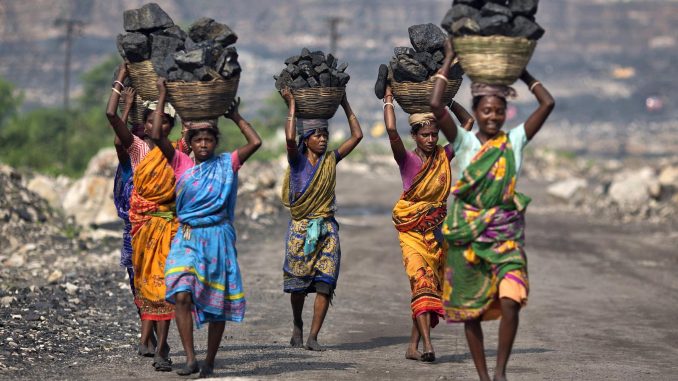
By Chitvan Singh Dhillon
There has been much excitement around India’s demographic dividend. It is being claimed that being a country of young people puts us at an immense economic advantage over other ageing nations. However, is the hype really justified? Maybe not! The primary reason why we might be unable to fully reap the benefits of this dividend is often brushed under the carpet, possibly because it is an unpalatable truth. India’s shocking gender gap in the labour force makes us much poorer as a nation, both economically and socially. With India poised to become a $10 trillion economy by 2030, it cannot afford to leave half of its workforce behind.
Regrettably, India has one of the lowest female labour force participation rates (LFPR) — usually calculated as the share of women that are employed or are seeking work as a proportion of the working age female population — among the emerging market economies and developing nations. While slightly more women work in India than in Pakistan (27 per cent and 25 per cent, respectively), Pakistan’s female labour-force participation rate is on the rise — as India’s is deteriorating. The proportion of women working in Bangladesh is three times higher than that of India, which ranks the last among BRICS countries in terms of female LFPR.
The big economic boom let loose by economic reforms has sidestepped many of India’s women. What’s worse: it appears that women have been tumbling out of the workforce in huge numbers rather than joining up.So, the moot question becomes: why have women been dropping out? This perverse trend is being influenced by factors on both demand and supply sides.
On the supply side, researchers have long observed a U-shaped relationship between the number of years of education and female labour force participation. It has been noted that at very low levels of education and income, women have no alternative but to join the workforce and support their households. But as the males in the family start earning more income, women tend to withdraw from work in the formal economy to give more attention to household activities. It is the women in the middle of the pack — those who are literate but have, at most, some schooling or have completed only high school — who are pushed both by the pressure to stay at home and by lack of ample jobs that match their intermediate levels of education. It is only at higher levels of education and income that women re-enter the workforce through well-paying jobs that match their education and skills. In some communities, there may be a social stigma attached to women working outside home — especially if it involves ‘menial’ work — which increases family pressures to drop out if the men are earning enough to run the family.
On the demand side, women’s crucial duties confine them to the four walls of their household. For pressing reasons they have to work, such as financial crunch, but they must do so in addition to their familial duties, and so they enter the labour force only as auxiliary workers. Employment is vital for eliminating poverty and for improving women’s status. However, it is potentially liberating only if it provides women a chance to advance their living standards and enhance their competencies. On the other hand, if it is driven by misery and low-paying jobs, then it may only add to a woman’s despondency. What is appalling is that despite three decades of GDP growth, the female labour force participation rates have not increased, but have actually fallen. Labour Bureau data indicates that women’s LFPR stood at just 27.4 per cent in 2015-16. Female labour force participation rates remain woefully low, and this could be a major drag, not just on women empowerment but also on India growth story.
Policy prescriptions
The immediate objective should not be to boost female LFPR at any cost. The idea is to augment decent work opportunities for women, and their freedom to choose to work outside the home and also access dynamic employment. One must bear in mind that no single policy prescription can be proposed to improve labour market outcomes for all women in India.
Firstly, there is a need to generate education-based jobs in rural areas. The state governments should make policies for the participation of rural women in permanent salaried jobs. The governments should also generate awareness to espouse a positive attitude towards women among the public since it is one of the most important impediments in women’s participation in economic activities.
Local bodies, with aid from state governments, should open more crèches in towns and cities so that women with children can step out and work. The crèches will open employment opportunities for women.
Supply side reforms to improve infrastructure and address other constraints to job creation could enable more women to enter the labour force. Higher social spending, including in education, can lead to higher female labour force participation by boosting female stocks of human capital.
Social norms are alterable, and broader economic trends and government policies are what really matter. Initiatives such as Skill India, Make in India, and new gender-based quotas — from corporate boards to the police force — can spur a positive change. But we need to invest in skill training and job support. More than half of the women who would like a job, particularly those in rural areas, say they do not have the skills required for the work they want to do — for example, leatherwork or textile manufacturing. Further, the opportunities that exist need to be more unbiased.
Drawing more women into the labour force, supplemented by structural reforms that could help create more jobs would be a source of future growth for India. Only then would India be able to reap the benefits of “demographic dividend” from its large and youthful labour force.
Views are personal.
Source: The Tribune

Leave a Reply